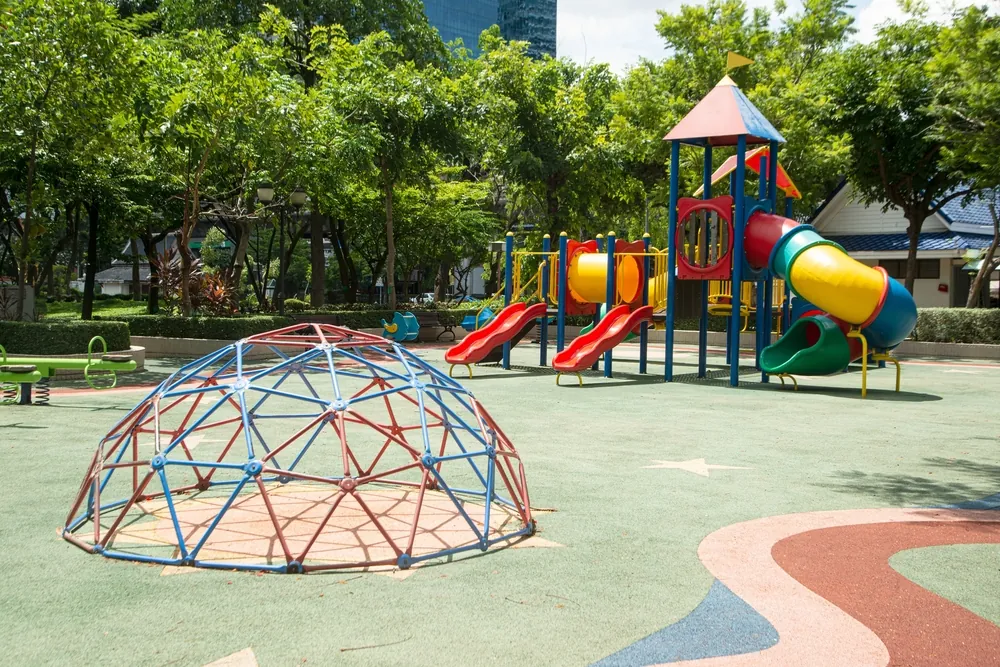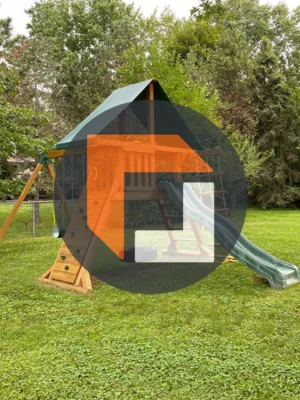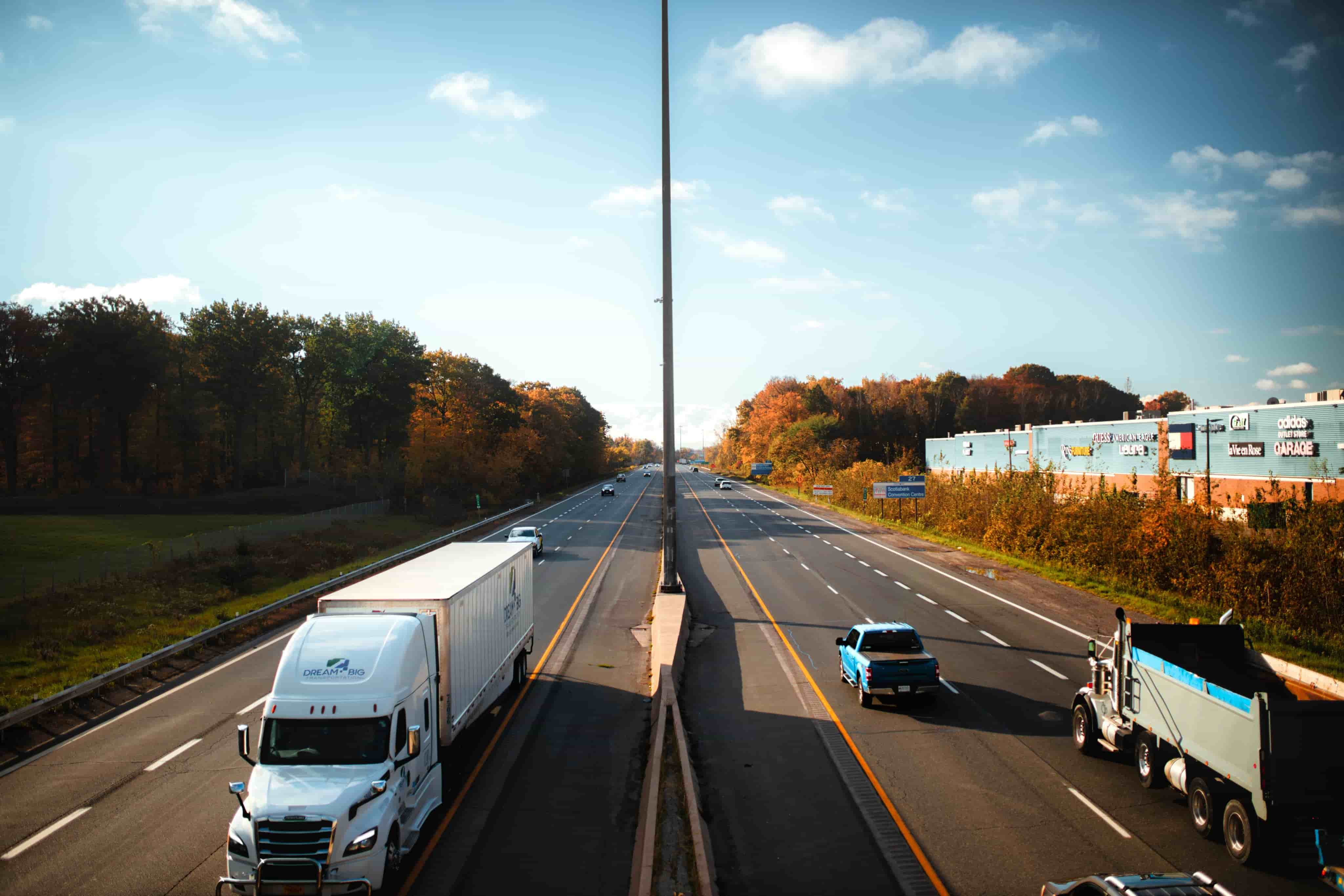
Shipping Playgrounds
When it Comes to Logistics Solutions, FreightCenter isn't Playing Around
The process of shipping playgrounds involves carefully packaging and securing the modular equipment to ensure safe transportation.
Shipping playground equipment isn’t just about moving large freight—it’s about making sure it arrives safe, complete, and ready to install. At FreightCenter, we specialize in oversized, irregular, and multi-part freight like modular playground systems, swing sets, slides, and surfacing materials.
With access to 50+ vetted carriers and a team that acts as an extension of your logistics department, we make sure your shipment gets from A to Playground with zero guesswork.
Thousands of businesses trust FreightCenter to move their freight faster, smarter, and cheaper! From unbeatable rates to top-notch service, our customers are raving about their shipping success.
See why they keep coming back!
Award-Winning Service, Trusted by Shippers Everywhere!
- 2021, 2017 & 2016 Food Logistics’ Top Green Providers
- 2021 & 2018 Supply & Demand Chain Executives’ Pros to Know: Matthew Brosious
- 2020 & 2019 Top Food Logistics’ 3PL & Cold Storage Provider Award
- 2020 & 2019 Business Observer’s Top 500 Companies on the Gulf Coast
- 2020 & 2017 SmartWay® Transport Partner
- 2020 & 2017 Food Logistics’ Champions: Rock Stars of the Supply Chain
- 2020 Best of Palm Harbor Awards for Local Businesses
- 2017 Green Supply Chain Award from Supply & Demand Chain Executive
- 2017 Tampa Bay Business Journal Heroes at Work
- 2016, 2015, & 2012 Food Logistics Top 100 Software and Technology Providers
- 2013 Tampa Bay Business 100 by Tampa Bay Business Journal
- 2013 Top 100 Great Supply Chain Partners by SupplyChainBrain
- 2012 TIA Samaritan Award Honorable Mention
- 2012, 2011 & 2010 TBBJ Fast 50 Recipient
- 2013, 2011, & 2010 Diversity Business Top Businesses

Choosing the Right Freight Company to Ship Playgrounds
At FreightCenter, we don’t just ship freight—we solve complex logistics challenges for playground installers, manufacturers, municipalities, and schools across the country. Our decades of experience in handling large, irregular freight translates into smoother deliveries, fewer delays, and more satisfied customers.
Here’s what makes us different:
- We specialize in oversized and irregular freight common in playground systems.
- Our advisors help you plan shipping around your installation schedule.
- We offer customized carrier matching—flatbeds, liftgates, white-glove, and more.
- We coordinate with delivery sites for limited access, appointment windows, and site restrictions.
- You’ll get live support from freight experts—not bots or generic help desks.
We manage everything from quotes and tracking to paperwork and carrier coordination, so you can focus on playing “The Floor is Lava,” while we handle your shipping needs.
Essential Documents for Shipping Playground Equipment
When shipping playground equipment, having the right documentation is crucial for a smooth, compliant freight experience. Common documents include a Bill of Lading, Commercial Invoice, Packing List, Insurance Documents, Customs Paperwork, and Import/Export Licenses (for international shipments). These documents help ensure regulatory compliance, customs clearance, liability protection, and accurate record-keeping. At FreightCenter, we assist with freight documentation services, ensuring you have all required forms filled out accurately and submitted on time for hassle-free shipping.
International Regulations & Standards for Playground Shipping
Shipping playgrounds internationally requires compliance with regional and global safety regulations, including standards set by organizations like the International Organization for Standardization (ISO) and the American Society for Testing and Materials (ASTM). The CPSC Handbook for Public Playground Safety also provides essential guidelines for U.S. shipments. Requirements may vary by country and can involve certifications, design compliance, packaging guidelines, and installation permits. Consulting with freight experts, playground manufacturers, or customs brokers can help ensure your shipment meets all legal and safety standards.
Playground Shipping Costs & Quotes
The cost to ship playground equipment depends on various factors, including equipment size, weight, shipping distance, transportation method, and special services like liftgate or residential delivery. For accurate pricing, it’s best to request a custom freight quote using your shipment’s dimensions, weight, origin, destination, and specific handling needs. FreightCenter offers competitive rates and expert guidance to help you find the most cost-effective and secure solution for your playground shipping needs. Get a free quote today!
At FreightCenter, we understand that shipping playgrounds requires careful handling, secure packaging, and reliable delivery. Whether you’re a parent, principal, or a child with your parent's credit card, our finely tailored freight solutions ensure that your monkey bars, slides, and seesaws arrive safely and in perfect condition.
Here’s how FreightCenter can help you ship jungle gyms using the best freight options:
If you’re shipping individual playground components or smaller batches of equipment, LTL (Less-Than-Truckload) freight shipping is an excellent option. This method allows you to share truck space with other freight, making it a cost-effective and efficient way to transport slides, swings, panels, and climbing structures for parks, schools, or recreational facilities. With FreightCenter’s network of trusted LTL carriers, your playground equipment is handled with care and delivered on schedule—without breaking your budget.
For larger playground shipments, such as bulk orders for schools, municipalities, developers, or installation companies, FTL (Full Truckload) freight shipping is the ideal solution. Your shipment travels in a dedicated truck, reducing the risk of damage from excess handling and transfers. Whether you're moving pre-assembled equipment, multiple playsets, or full commercial playground systems, FreightCenter provides custom truckload solutions to ensure your cargo is securely packed, professionally handled, and delivered directly to your site.
Need your playground equipment delivered fast? Whether you’re preparing for a grand opening, meeting a construction deadline, or replacing damaged equipment, FreightCenter’s expedited freight shipping services ensure timely delivery. With priority handling, real-time tracking, and faster transit options, we help you keep your project on schedule—even under tight timelines.
Shipping custom-built, specialty, or high-value playground structures requires extra care and precision. FreightCenter offers specialized freight solutions, including white-glove delivery, climate-controlled transport, and enhanced security services. Perfect for transporting interactive installations, designer playgrounds, or museum-quality exhibits, our freight experts ensure limited handling, added protection, and insurance coverage to give you peace of mind from pickup to delivery.


FreightCenter Is Here to Get You Playing!
FreightCenter Knows How Important Your Playground Is!
FreightCenter understands the importance of delivering your play equipment safely and on time. With over 25 years in the logistics industry, we are dedicated to providing the best shipping experience while keeping your costs low. We partner with over 50 carriers nationwide, allowing us to offer discounted rates that you won’t find anywhere else. Our tailored solutions include expedited shipping, white-glove services, and specialized freight options, ensuring that your slides, monkey bars, seesaws, and climbing walls arrive in perfect condition.
For added value, repeat customers can earn points for exclusive rewards every time they ship with us!
Ready to ship your playground equipment? Our expert agents are here to help you find the best shipping solution for your needs. Get a free freight quote using our online tool, or call us at (800) 716-7608 today!
Frequently Asked Questions about Shipping Playgrounds

Q. What’s the best way to ship playground equipment?
The best shipping method depends on the size and quantity. LTL (Less-Than-Truckload) shipping works well for smaller components, while FTL (Full Truckload) shipping is ideal for large or bulk playground structures.
Q. Can I ship fully assembled playground equipment?
Yes, but fully assembled structures typically require flatbed trucks or oversized freight services. Disassembling the equipment before shipping is often more affordable and easier to manage.
Q. How much does it cost to ship playground equipment?
Costs vary based on equipment size, weight, shipping distance, and transport method. To get an accurate price, request a custom freight quote with detailed shipment information.
Q. How should I package playground equipment for shipping?
Disassemble when possible, wrap components in protective materials (like foam or bubble wrap), and secure parts on pallets or in crates to prevent shifting. Label all packages with handling instructions.
Q. Can I ship playground equipment internationally?
Yes, playgrounds can be shipped internationally via ocean or air freight. You’ll need proper documentation and must comply with destination country regulations and safety standards.
Q. What documents are required to ship playgrounds?
Typical documents include a Bill of Lading, Commercial Invoice, Packing List, Insurance Documents, and for international shipments, Customs Forms and Import/Export Licenses.
Q. Are there specific regulations for shipping playground equipment?
Yes. Equipment must meet safety standards like those from ASTM, ISO, or CPSC, especially for international shipments. Local regulations may require certifications or permits as well.
Q. How long does it take to ship playground equipment?
Delivery times depend on distance and method. LTL shipping typically takes 3–7 business days, while expedited and international shipments vary based on carrier availability and customs clearance.
Q. Do I need freight insurance when shipping playgrounds?
Yes, freight insurance is strongly recommended for high-value playground shipments to protect against damage, loss, or delays during transit.
Q. What types of playground items can be shipped?
We can ship everything from slides, swings, climbing walls, tunnels, and safety surfacing to full playground systems—either disassembled or assembled (depending on transport method).
3 Tips for Shipping Playgrounds
Request Freight Class Optimization
Playground equipment often falls into high freight classes due to its size and shape, which can drive up costs. Ask your freight provider (like FreightCenter!) if they can help reclassify your shipment based on density, packaging, and stacking ability. A small tweak—like improving stackability or bundling items differently—can lower your freight class and save you hundreds on shipping.
Consolidate Small Parts into a Master Pack
Playgrounds typically include many small hardware pieces, fasteners, or connectors. Instead of scattering these across multiple boxes (which can get lost or damaged), create one clearly labeled master box for all small components. This reduces handling errors, simplifies inventory checks at delivery, and can avoid re-delivery fees if parts go missing.
Coordinate Delivery Around Site Readiness
If your playground is shipping to a park, school, or construction site, make sure the delivery timing aligns with on-site access. If a truck arrives and there’s no equipment to unload it (like a forklift or crew), you could face detention fees, redelivery charges, or storage costs. Scheduling "just-in-time" delivery with site managers can avoid costly delays and streamline setup.

